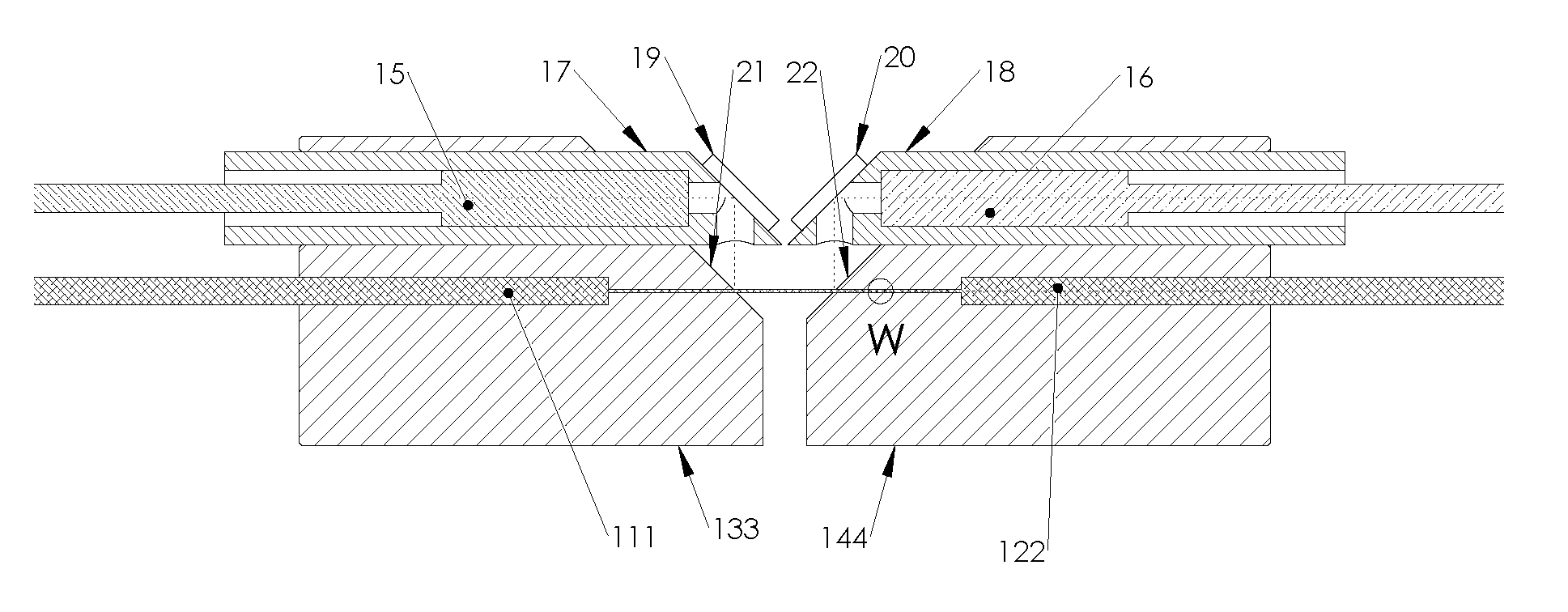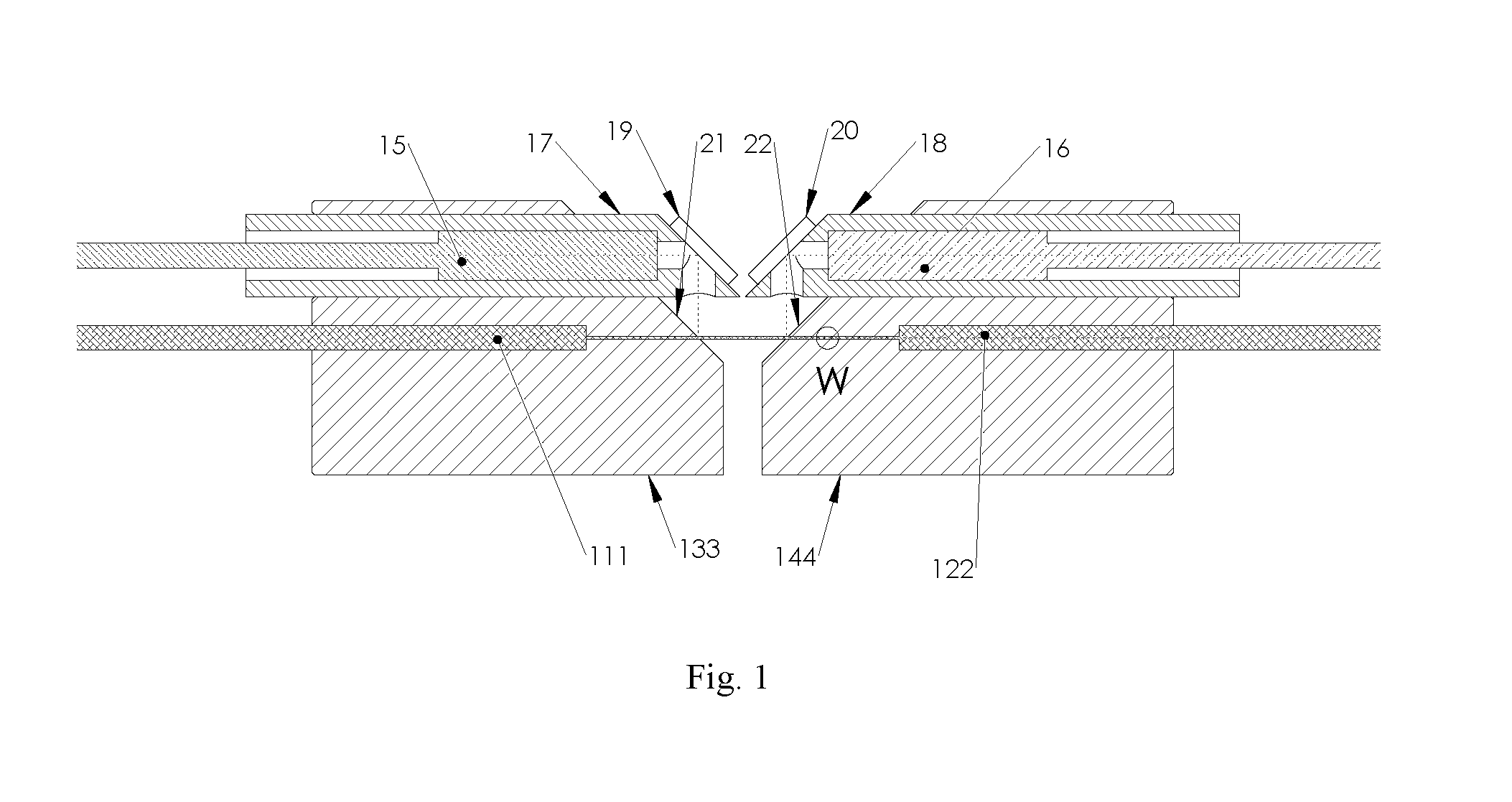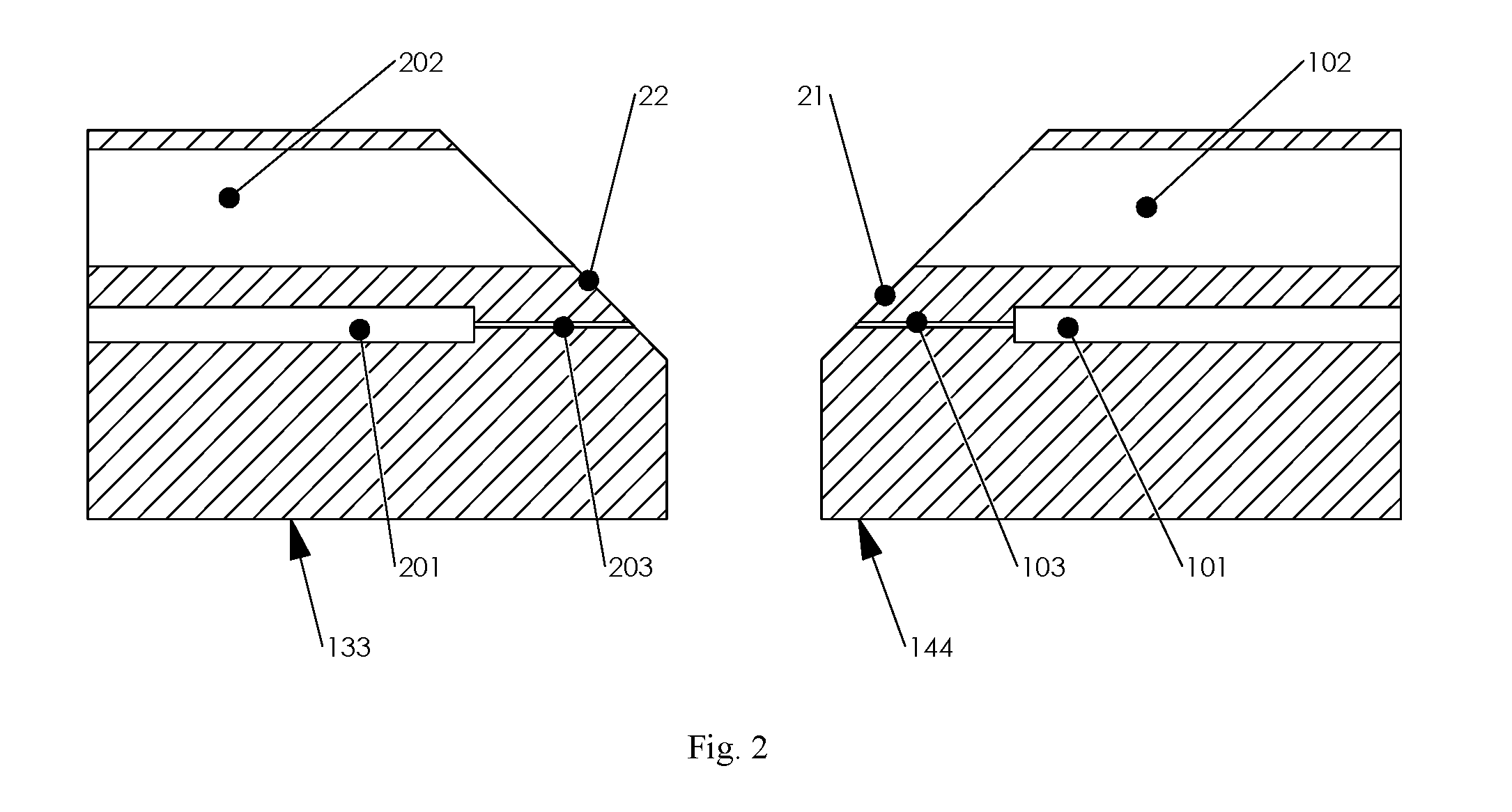Two-channel, dual-mode, fiber optic rotary joint
a fiber optic rotary joint and dual-mode technology, applied in the direction of optics, instruments, optical light guides, etc., can solve the problems of electrical power requirements, difficult fabrication of facing lens systems, and loss due to crosstalk and overlap of signal paths, so as to achieve low-profile and compact structure
- Summary
- Abstract
- Description
- Claims
- Application Information
AI Technical Summary
Benefits of technology
Problems solved by technology
Method used
Image
Examples
Embodiment Construction
[0014]FIG. 1 illustrates a basic design of a two-channel fiber optical rotational interface. The holder 133 and 144 can be rotatable relative to each other. The axis of the rotation is the geometrical axis 101, 201 of the holder 133 and 144 (shown in FIG. 2). The first channel of light pass consists of a optic fiber 111 which is fixed on the axis 101 of holder 133, and another optic fiber 122 which is fixed on the axis 201 of holder 144. The diameter of the optic fiber is about 0.125 mm. The holder 133 and 144 have a through central hole 103, 203 at the diameter of 0.126 mm, slightly larger than the diameter of fiber 111 and 122. Fiber 111 should be longer than fiber 122 so that it could get into the central hole 103 of holder 144. The end surfaces of fiber 111 and 122 are oppositely positioned inside the central hole 103 of holder 144 on the rotational axis but separated by a clearance about 0.5 um. An enlarged view inside of central hole of holder 144 is shown in FIG. 3. When the ...
PUM
 Login to View More
Login to View More Abstract
Description
Claims
Application Information
 Login to View More
Login to View More - R&D
- Intellectual Property
- Life Sciences
- Materials
- Tech Scout
- Unparalleled Data Quality
- Higher Quality Content
- 60% Fewer Hallucinations
Browse by: Latest US Patents, China's latest patents, Technical Efficacy Thesaurus, Application Domain, Technology Topic, Popular Technical Reports.
© 2025 PatSnap. All rights reserved.Legal|Privacy policy|Modern Slavery Act Transparency Statement|Sitemap|About US| Contact US: help@patsnap.com



